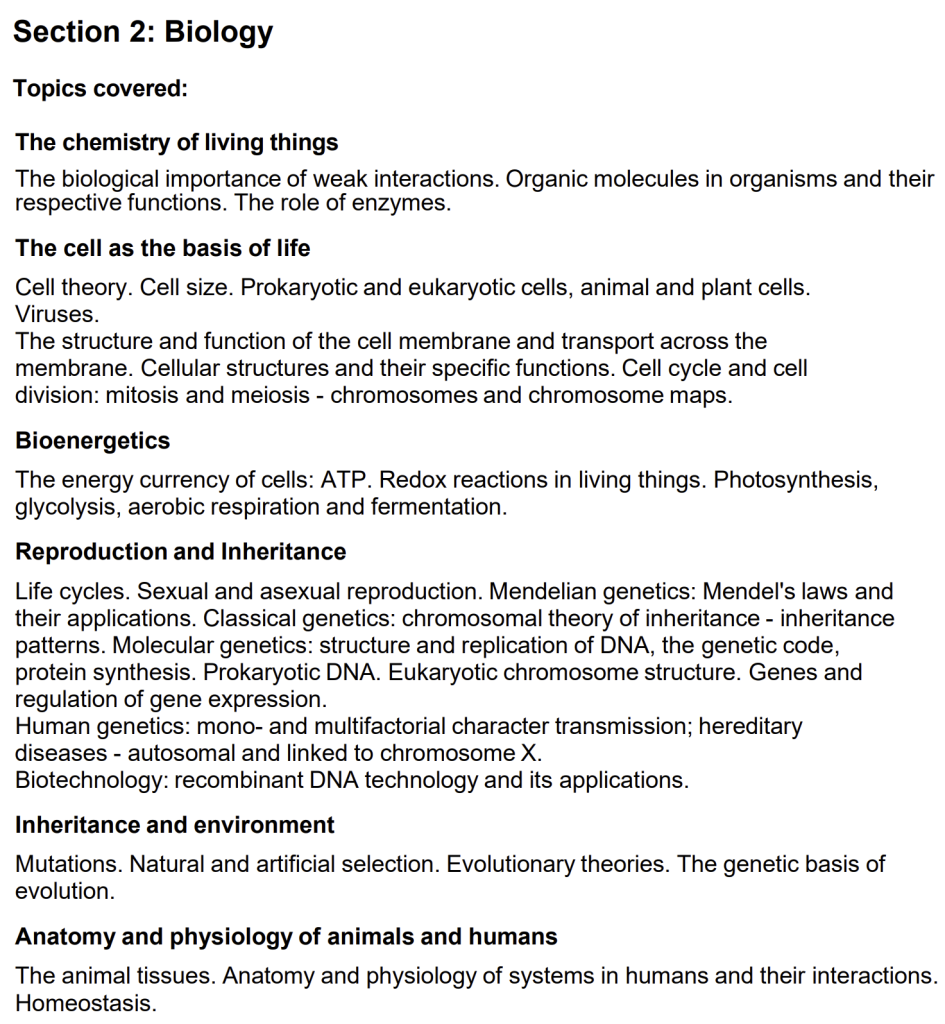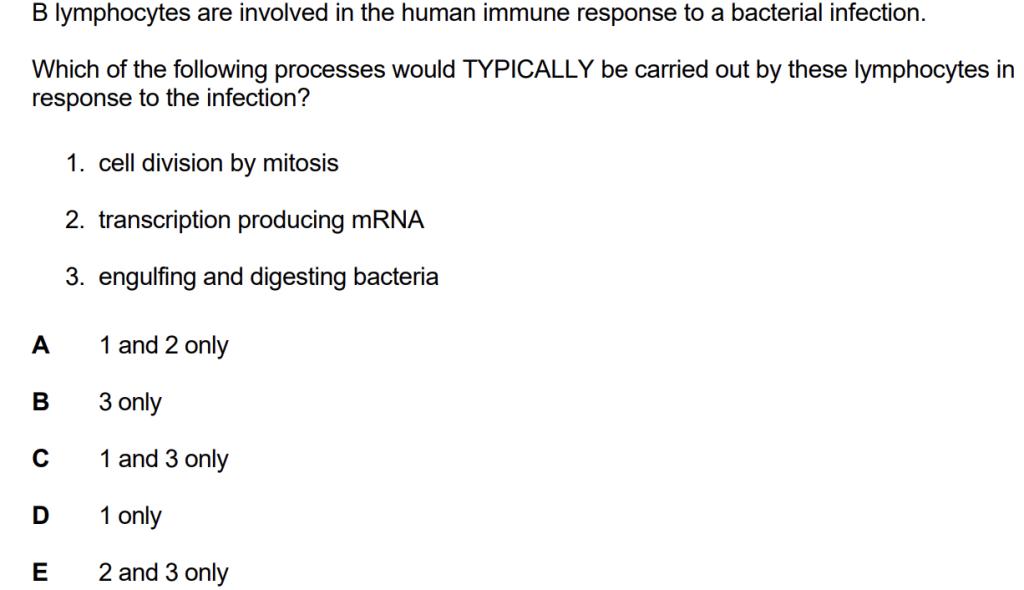

Paris University of Pavia | Ari's Past Student (2020)
18th of April, 2023The International Medical Admission Test (IMAT) is a standardized examination designed to assess the aptitude and knowledge of prospective medical students applying to undergraduate programs in Medicine and Surgery at various universities in Italy that offer courses taught in English. The exam is administered by the Italian Ministry of Education, Universities, and Research (MIUR) in collaboration with Cambridge Assessment Admissions Testing.
IMAT 2018 consisted of four main sections: Critical Thinking and General Knowledge, Biology, Chemistry and Maths & Physics. This comprehensive exam evaluates the candidates’ abilities to apply scientific knowledge and reasoning to real-world situations, which are essential skills for any successful medical practitioner.
Critical Thinking and Problem-Solving
First, we will explore the Logical Reasoning and General Knowledge section of the IMAT. In this part of the analysis, we will discuss the unique aspects of this year’s General Knowledge section, which was smaller and more specific in focus than usual. Additionally, we will touch upon the Logical Reasoning component and its connection to the Critical Thinking and Problem Solving section. By understanding the structure and content of this section, future candidates can better prepare for the diverse range of questions they may face in the exam.
Question Types
Conclusion Identification
Candidates were presented with passages containing arguments and were asked to identify the main conclusion. This type of question requires a good understanding of argument structure and the ability to differentiate between premises, intermediate conclusions, and the main conclusion.
Argument Flaws
These questions required candidates to recognize the logical errors or fallacies in a given argument. Being able to spot such flaws is crucial for critically assessing the strength and validity of an argument.
Strengthening and Weakening Arguments
In this type of question, candidates were asked to select an answer choice that either strengthens or weakens a given argument. This requires a solid understanding of how evidence and reasoning contribute to an argument’s overall strength.
Recognizing Principles and Logical Structures
Candidates had to identify the underlying principles or logical structures in a given passage. This requires the ability to analyze the relationships between different components of the argument and recognize patterns and structures that may not be explicitly stated.
In addition to the critical thinking questions, this year’s paper also featured a significant number of problem-solving questions, with a majority being complex numerical puzzles and a few spatial puzzles.
Complex Numerical Puzzles
These questions tested candidates’ abilities to solve intricate problems involving numbers, mathematical operations, and logical reasoning. To excel in this type of question, candidates must be comfortable with basic arithmetic and algebra, as well as possess strong analytical skills.
Spatial Puzzles
A minority of the problem-solving questions were spatial puzzles, which required candidates to visualize objects or patterns in three-dimensional space. These questions assess a candidate’s spatial reasoning skills and their ability to mentally manipulate shapes and patterns.
General Knowledge
In this year’s IMAT, the General Knowledge section was noticeably smaller compared to the typical format. It consisted of only two questions, which were quite specific in their focus. This deviation from the standard General Knowledge section makes it even more important for future candidates to be prepared for any surprises that the exam might present.
- Scientific Theories and Respective Scientists: This question required candidates to have a solid understanding of key scientific theories and their originators. To excel in this type of question, candidates should familiarize themselves with notable scientists and their contributions to various fields of study.
- Nations and Corresponding News Outlets: The second question in this section tested candidates’ awareness of global news outlets and their respective countries. Staying informed about major news organizations and their origins can help candidates prepare for this type of question.
Despite the smaller General Knowledge section in this year’s IMAT, it’s essential for candidates to continue developing a strong foundation in a wide range of subjects and keep abreast of current events to succeed in future exams.
Biology
In this part of our analysis, we will delve into the Biology section of the 2018 IMAT. This section covers a diverse range of topics, reflecting the interconnected nature of the subject. We will explore various areas of biology, such as cellular and molecular biology, genetics and inheritance, human physiology, immunology, microbiology, histology, and organism bioenergetics. Our aim is to help future candidates better understand the types of questions they may encounter and guide them in their preparation.


Cellular and Molecular Biology
Questions in this category focused on the fundamental processes that occur within cells and the molecular interactions that underpin them. Topics included:
- Meiosis
- Chromosomal crossover
- tRNA anticodons
Genetics and Inheritance
This section tested candidates’ understanding of genetic concepts and the mechanisms that drive inheritance patterns. Topics included:
- Dominant inheritance condition
- Cystic fibrosis
Human Physiology
Questions in this category assessed candidates’ knowledge of various physiological systems and processes in the human body. Topics included:
- Physiology of pH
- Cardiac physiology
- GI Tract pH
- Neurons
Immunology
This section focused on the immune system and its components, specifically targeting the B lymphocyte functions and structure.


Microbiology
Questions in this category addressed the growth and characteristics of microorganisms. Specifically, the Bacterial growth in a laboratory.
Histology
This section tested candidates’ understanding of the different types of tissues found in the body. Topics included:
- Epithelium types
Organism Bioenergetics
This section focused on the energy utilization and production processes in living organisms. Topics included:
- Organism bioenergetics
This year’s Biology section covered a diverse range of topics, requiring candidates to have a solid understanding of various biological concepts and processes. A thorough preparation and a strong foundation in these areas are essential for future candidates to excel in the IMAT Biology section.
| Topic | Number of Questions |
|---|---|
| The chemistry of living things | 3 |
| The cell as a basis of life | 6 |
| Bioenergetics | 1 |
| Reproduction & Inheritance | 1 |
| Inheritance & Environment | 1 |
| Anatomy & Physiology | 6 |
Chemistry
Next, we will analyze the Chemistry section of the 2018 IMAT. This section encompasses both fundamental concepts and more specific knowledge related to chemical compounds. We will outline the main areas of chemistry covered in the exam, such as fundamental concepts, organic chemistry, nomenclature and reactions, and periodic table and elements. By examining these topics, we hope to provide valuable insights for future candidates as they prepare for this important section of the exam.
Fundamental Concepts
Questions in this category focused on basic chemical principles and properties. Topics included:
- Compound oxidation state
- Solubility
- Ions
- First Ionization energy
- Molecular polarity and shape
- Ideal gas
Organic Chemistry
This section assessed candidates’ understanding of organic molecules and their properties. Topics included:
- Organic molecular formula
Nomenclature and Reactions
Questions in this category tested candidates’ ability to name compounds and predict chemical reactions. Topics included:
- Compound naming
- Ionic reactions
Periodic Table and Elements
This section focused on the properties and trends of elements within the periodic table. Topics including the important Group I elements.
The Chemistry section of the 2018 IMAT exam covered a wide range of topics, requiring candidates to possess both foundational knowledge and a deeper understanding of specific chemical compounds and processes. To excel in future IMAT exams, candidates should develop a strong foundation in these areas and be prepared for questions that may test more specialized knowledge.
| Topic | Number of Questions |
|---|---|
| The composition of matter | 2 |
| Atomic Structure | 1 |
| The periodic table of the elements | 2 |
| The chemical bond | 1 |
| Fundamentals of inorganic chemistry | 1 |
| Chemical reactions and stoichiometry | 3 |
| Solutions | 1 |
| Oxidation and reduction | 0 |
| Acids and bases | 0 |
| Fundamentals of organic chemistry | 1 |
Mathematics and Physics
In the last portion of our analysis, we will examine the Mathematics and Physics section of the 2018 IMAT. The questions in this section challenge candidates on their understanding of a variety of topics in these disciplines. We will provide an overview of the specific topics covered in each subject, focusing on key concepts in physics and various subdomains in mathematics, such as algebra and numerical sets, functions, and geometry. Our goal is to help future candidates better focus their preparation and develop the necessary skills to excel in these disciplines.
Physics
The Physics questions in the 2018 IMAT covered several key concepts, including:
- Functions
- Electrical resistance
- Molecule motion
Candidates should develop a strong foundation in these areas, as well as other fundamental Physics principles, to succeed in this section of the exam.
| Topic | Number of Questions |
|---|---|
| Measures | 0 |
| Kinematics | 1 |
| Dynamics | 1 |
| Fluid Mechanics | 0 |
| Thermodynamics | 0 |
| Electrostatic and electrodynamics | 1 |
Mathematics
The Mathematics questions were distributed across several subdomains, including:
- Algebra and numerical sets: 2 questions
- Functions: 1 question
- Geometry: 2 questions
To excel in this section, candidates must be well-versed in various mathematical concepts and techniques, ranging from algebra and numerical sets to functions and geometry.


By familiarizing themselves with the specific topics covered in the 2018 IMAT Mathematics and Physics section, candidates can better focus their preparation and develop the necessary skills to tackle a wide range of questions in these disciplines. Maintaining engagement with the material and honing problem-solving abilities will be crucial for success in this challenging section of the exam.
| Topic | Number of Questions |
|---|---|
| Algebra and numerical sets | 2 |
| Functions | 1 |
| Geometry | 2 |
| Probability and statistics | 0 |

